iCat: Tomislav Uroda Wants to Connect Islands with Electric Vessels
November the 8th, 2021 - The idea of connecting Croatia's many islands with an electric vessel, which is far more environmentally friendly and sustainable, has been in the works since way back in 2010. The man behind the iCat project spoke to tportal about his ideas and plans.
As Morski writes, the vision of a fleet of modern and economical ships connecting Croatia's many inhabited islands to the mainland has been in Tomislav Urod's head for more than ten years now.
He started thinking about it as a young shipbuilding engineer, disappointed with the condition of the ships transporting passengers across the Croatian Adriatic. He started turning his dream into reality back in 2011 by founding iCat. To date, he has developed several types of solar and electric boats, and recently attracted the media spotlight as one of the signatories of the initiative to build an Adriatic fleet of as many as 21 ''green’''catamarans.
Uroda revealed in an interview for tportal how realistic it is for this to actually come to fruition and happen, what iCat is currently dealing with, and what his future business plans are.
iCat has sold four of its solar boats so far, and its last job was with Mljet National Park, to which three BabyCat boats were delivered, with the last boat delivered at the beginning of last year. The contract was worth about 10 million kuna. With the outbreak of the ongoing coronavirus pandemic, orders and production stopped. Uroda has since been dedicated to designing new types of ships and dealing with agreements on the Autonomous Electric Ships for Smart Islands and Cities initiative, which was launched about ten days ago.
In addition to iCat, the initiators and signatories of the initiative are the Faculty of Mechanical Engineering and Naval Architecture, the Faculty of Electrical Engineering and Computing, the Technology Transfer Centre and the Nikola Tesla Innovation Centre. The initiative envisages the development and construction of 21 passenger catamarans with a capacity of 100 to 300 passengers in three sizes, and one of each model will be located throughout the Croatian Adriatic as part of a pilot project to test the possibilities of individual destinations.
The smallest catamaran would be 17 metres long, seven metres wide, and could accommodate 94 passengers. Its value stands at about two million euros.
''We don't look at it so opportunistically. Here in our country, a lot of opportunistic projects have been born lately, because now everyone is trying to grab hold of something green and self-sustainable. We only offer what we know. We've been developing the project since back in 2010, when we started the first cooperation with the Faculty of Mechanical Engineering and Naval Architecture on the development of passenger ships. Then, in 2015, we made a detailed analysis with the Koncar Institute of Electrical Engineering on the possibility of implementing electric propulsion on such a vessel. The initiative is a logical sequence of everything we've been doing for years,'' explained iCat's Tomislav Uroda.
He added that the initiative has no funders behind it and it is the result of long-term development and discussions with various state institutions about what they need and what they would finance in the next budget period.
Croatian administration is, unsurprisingly, very slow...
Since none of the ministers was present at the signing, when asked what level of interest the state showed, he said:
The State Secretary from the Ministry of Economy and the Director of the Inland Navigation Directorate of the Ministry of Maritime Affairs were present. Their position is that this will be one of the priority projects in the next financial period. What we've heard in communication with the institutions is that they have 227 billion kuna at their disposal that they have to spend in the period from 2020 to 2027. That's a very short period and there are only five years of it left, and we can deliver the first ship in the third year of the project. The administration is very slow. The European recovery plan began the same year that the coronavirus pandemic began and the idea was for countries to spend money to save their economies. Nothing has happened to or with us so far.
Who should apply for European Union funds?
We expect such an application to come from the top. We have no plan to operate these ships. We'll build them for some carrier that then will apply for funds. It's the state that must recognide the project and put it into one of its programmes, as was the case with Mate Rimac’s initiative to research, develop and produce autonomous electric taxis.
Has Jadrolinija shown interest in your catamarans?
Jadrolinija hasn't, no, but other private transport companies have. Jadrolinija is a huge company and it may be looking at the process conservatively.
Can Rimac batteries be used in your ships?
We don't cooperate with him, we import our batteries. Although ten years ago Rimac and I talked about whether he could assemble a battery drive for us. He told me; ''You make the boat, I’ll bring the battery, and we’ll see what we get.'' However, developing a boat is a little more complicated than developing a car. A prototype ship is a very expensive thing. You can't start working in your garage, you have to report it to the captain's office immediately as a ship under construction. Then you're followed through the whole process by the Croatian Register of Shipping. They must first approve the design, the structure and all of the equipment of the ship. They come to set up the keel, check the materials that are installed…
Tomislav Uroda also says that in the period from 2009 to 2011 he worked for the Norwegian company CroNoMar.
When I told them about electric boats, they sort of stuck their noses up at it. What do we need it for? they said, when we have oil? But while we in Croatia were changing our minds, the Norwegians stepped up their game and today they have the strongest fleet of electric boats in the entire world. They're building large ships, mostly ferries, which network the fjords, iCat's Tomislav Uroda concluded for tportal.
For more, check out Made in Croatia.
How to Brand Croatian Islands? Showcasing Individuality
November 3, 2021 - They are among the crown jewels of tourism on the Adriatic, but how to brand Croatian islands?
They are one of the most picturesque attractions, and yet we can't agree how many of them there are. Some say Croatia has 1185 islands, others 1244 and others 1246.
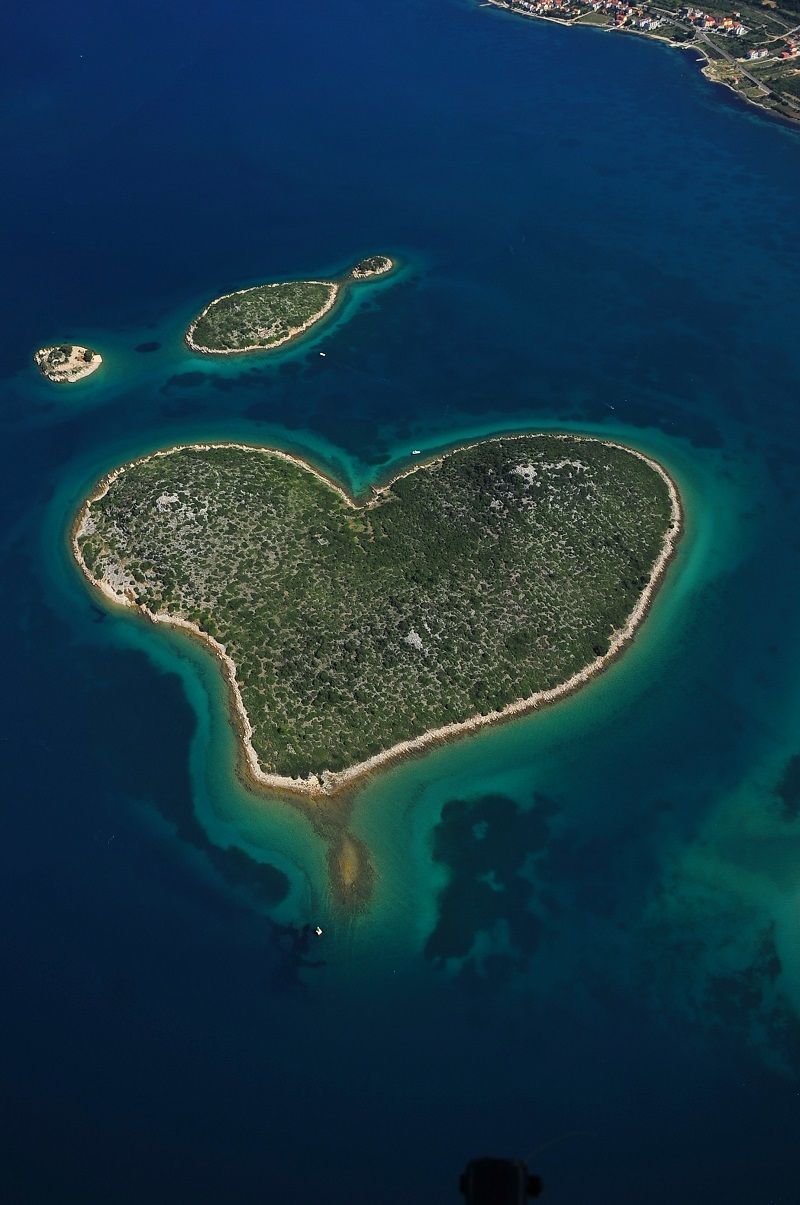
It has always been somewhat symbolic to me of the 'strategy' of the Kingdom of Accidental Tourism that we cannot even agree on how many pieces of our prized asset we have. If you are wondering why there is confusion, How Many Islands Does Croatia Have? should make things clearer.
Now that we have confronted tourists with the amazing statistic of more than a thousand islands on offer, the next logical step might be to tell people a bit about them, so that they can differentiate between them and make an informed choice on which ones might be most suited to visit.

A few years ago, as part of the TCN series, 25 things to know about Croatia, I did a piece on the islands - Croatian Islands: 25 Things to Know about the Gems of the Adriatic.
And yet, despite that incredible diversity, we do a terrible job at informing tourists of the wealth of choice on offer.
I have been meaning to write something on the subject for a while, but I was finally inspired by this LinkedIn post below - from a man with a far bigger brain than mine, and a much more intricate understanding of tourism. Regular readers of TCN may be familiar with the excellent tourism writings of Zoran Pejovic on the site already.

Croatia and the (open) question of islands brand architecture
(Friday night musings)
Over the past couple of weeks I took part in several webinars and discussions on the topic of (smart) development of Croatian islands, mostly from the perspective of tourism development, but not limited to. However, even saying the syntagma "Croatian islands" I fail to have a clear image of what exactly do we refer to, other than in the pure geographical terms. It is of note to mention here that I have dedicated years of my career to hospitality projects on the islands, so I know a thing or two about the said islands. By the way, Croatian archipelago is the second largest in the Mediterranean Sea, after the Greek archipelago.

This is largely a branding and positioning issue. Is it Croatian islands, Croatia's islands, Islands of Croatia, Adriatic islands, Dalmatian islands and Kvarner Gulf? Is it Dubrovnik archipelago, Split archipelago, Šibenik archipelago, Zadar archipelago? Or Elaphiti, Kornati? Or is it all of the 718 islands, 389 islets and 78 reefs all individually listed? Or we focus only on the 47 inhabited islands?
How do we position Hvar, two years in a row Condé Nast Traveller Best Island in Europe along for example Kornati archipelago, a National Park, which consists of 140 uninhabited islands and presents one of the most beautiful wonders of nature in Europe?
Perhaps these discussions were held in the nineties, perhaps in the 2000s, or in 2010s, but surely I don't hear much being spoken about this in 2020s. How do we brand and position our islands. Which strategy do we apply?
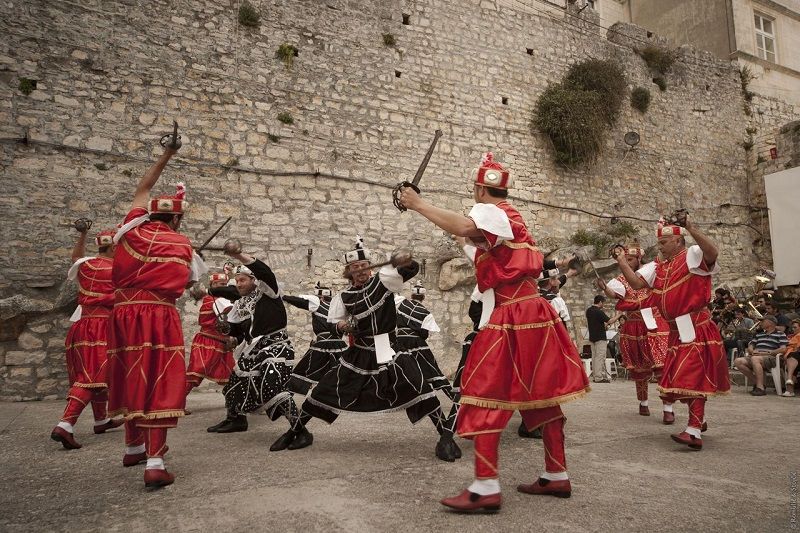
Maldives for example took the branded-house marketing strategy, and you never really know the names of individual islands, but one knows very well the strength of the brand that Maldives are. Balearic islands took the route of house-of-brands and you know of it as a brand, but the individual brands of Ibiza and Mallorca are stronger brands. When people go to Ibiza or Mallorca they almost never say they go to Spain, as the appeal of island branding is stronger.
How does one square this brand architecture and manage a loose network of brands when we have four different tourist boards on Hvar alone, trying to brand their towns independently?
When we were opening Maslina Resort, we wrote Maslina Resort, Hvar, Croatia. This could be called Endorsed Brands strategy, as the brand of Hvar was being linked to the brand of Croatia? Or perhaps this was Master/Sub-brand relationship? None of this is clear. What is clear is that islands are more than their geographic names and locations, when it comes to the appeal and imagination they cause in people's minds. This needs to be utilized better. Island is one of the most romanticized words in English language. We have plenty of them.
p.s. if someone knows work that was done on the topic of Croatian islands branding architecture please share.
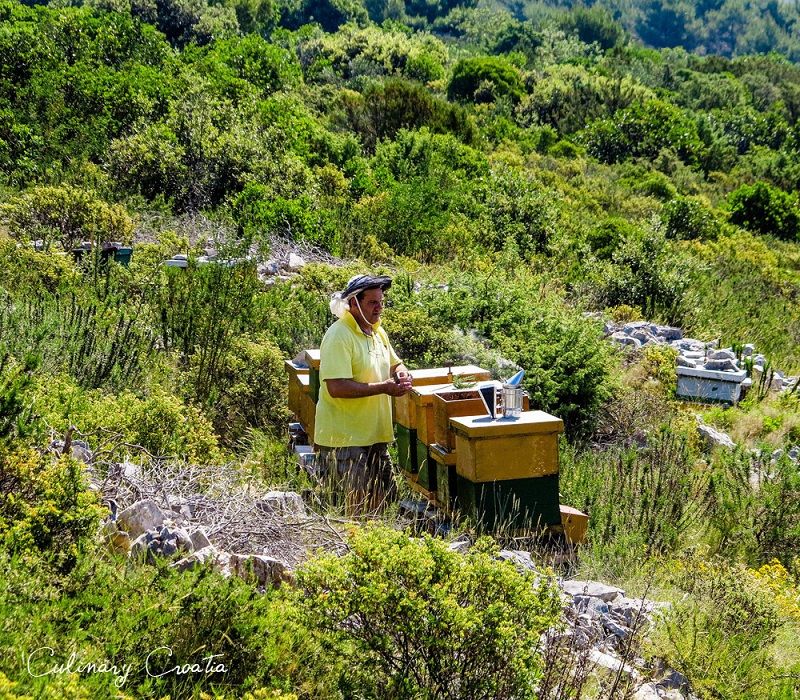
This was my answer:
For me Croatian islands. People get confused by Dalmatia, Kvarner, Adriatic. They are easy to brand I think, and with such diversity, you can give personality to each. Losinj, Island of Vitality is a great start. Call it Losinj, Croatian Island of Vitality, Hvar, Croatian UNESCO Island of Wine. Solta, Croatian Island of Honey, Susak, Croatian Island of Sand, and suddenly people can see they are all different. I wrote an article on 25 things you wouldn't expect to find on Cro islands a few years ago as a starter
How hard would it be to create a map - a website even - and a campaign (the Kings love their campaigns) promoting Croatian Islands Full of Diversity.
Rather than 'we have somewhere between 1185 and 1246 islands, we can't quite agree' and they are all pretty...
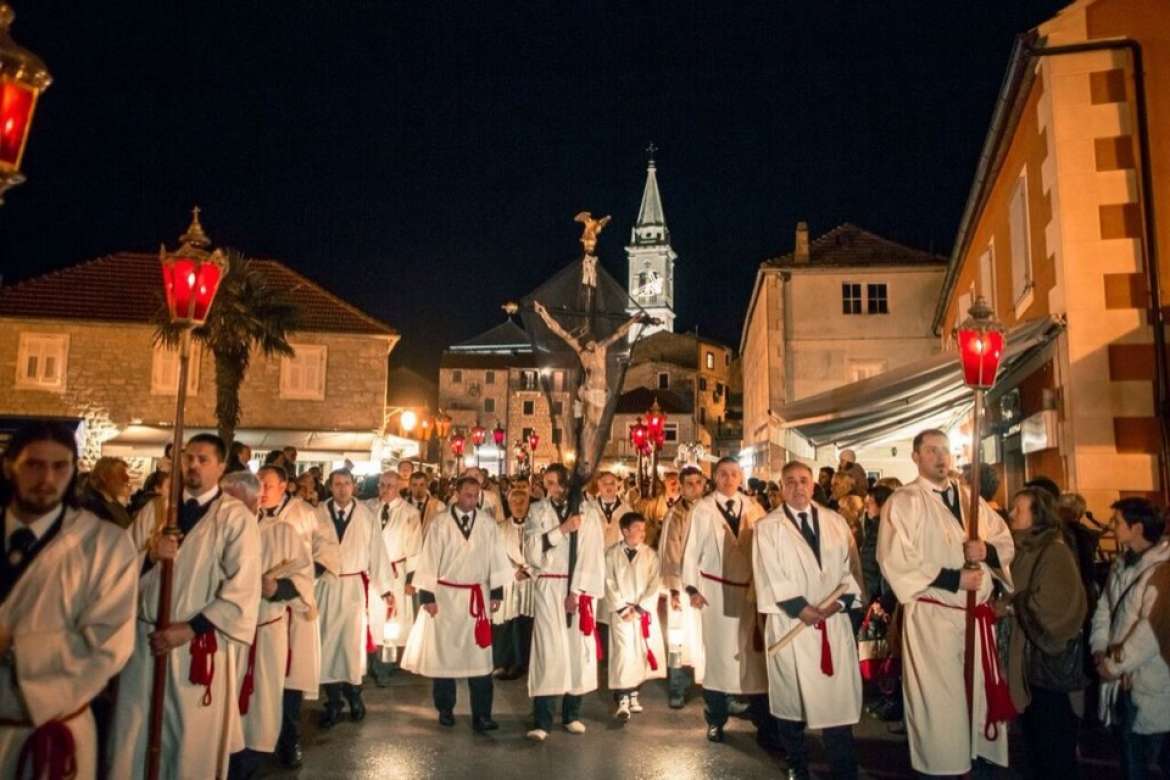
Meet the Croatian Islands - which one was created for you?
Then (just some rough ideas - and yes, I will be attacked for citing the wrong association within 5 minutes of publishing, so bear in mind these are working examples only.
Losinj, Croatian Island of Vitality
Hvar, Croatian UNESCO Island of Wine
Brac, Croatian Island of Olives and Stone
Korcula, Croatian Island of Marco Polo
Solta, Croatian Island of Honey
Mljet, Croatian Island of National Parks
Jerolim, Croatian Island of Naturism
Vis, Croatian Island of Military Tunnels and Cricket
Bisevo, Croatian Island of Blue and Green Caves
Goli Otok, Croatian Island of Dark History
Susak, Croatian Island of Sand
Peljesac, Croatian Half-Island of Zinfandel's Cousin
Pag, Croatian Island of Cheese, Lamb & Party
Galesnjak, Croatian Island of Hearts
Zlarin, Croatian Island of Coral
Krapanj, Croatian Island of Sponges
Cres, Croatian Island of Griffon Vultures
Brijuni, Croatian Island of Exotic Animals
Lokrum, Croatian Island of Game of Thrones
We could go on, but you get the point.
It really is not that hard.
Solar-Powered Catamarans for Croatian Smart Islands Being Developed
October the 27th, 2021 - Croatian smart islands are set to have something new, with as many as 21 autonomous, solar-powered catamarans set to connect them to the mainland.
As Poslovni Dnevnik/Darko Bicak writes, the Republic of Croatia is very much a ''maritime country'' and ships, mostly ferries and catamarans, are often the only connection to civilisation for tens of thousands of inhabitants on 47 of the nation's inhabited islands. That's why efficient and ecological shipping is of strategic importance for the country. Part of the solution could be a system of autonomous electric ships, the proposal of which was presented very recently in Zagreb.
At the Faculty of Mechanical Engineering and Naval Architecture (FSB), the initiative "Autonomous electric ships for smart islands and cities" was signed with the aim of developing modern shipping, using a zero emission rate, relying exclusively on "green" fuels.
At the FSB, they point out that technologically advanced propulsion on ships is accompanied by partial or complete autonomy, where the safety aspects of passenger transport come first, and autonomous docking is the first development step.
The initiative envisages the development and construction of 21 passenger ships with a capacity of 100 to 300 passengers, which will be built in three sizes, and one of each model will be located throughout the Croatian Adriatic as part of a pilot project to test the possibilities of individual destinations. A total of seven destinations will be selected on the basis of joint deliberations with the competent authorities and the aim will be to connect Croatian smart islands in a far better way.
These modern green vessels will be for the benefit of both residents and tourists
The development of this fleet of electric ships is accompanied by requirements for the development of energy infrastructure for the supply of ships with electricity. The project also envisages the development of charging stations with battery tanks and solar power plants for green electricity generation.
By connecting to the energy infrastructure, the battery tanks of ship charging stations will contribute to the development of Croatian smart islands and cities as part of a system of "smart" networks that will enable the storage and delivery of the said electricity.
As explained by Tomislav Uroda, the director of the company "iCat - integrator and shipbuilder" on whose ships electric propulsion and autonomous navigation will be tested, based on the existing iCat model, they'll develop a passenger ship project and ship management and control system based on advanced methods and artificial intelligence (AI).
"Ship monitoring and control, a robotic system for replenishing the ship's energy tanks, and a system of high-power smart charging stations that use energy from renewable sources are the backbone of the development and application of modern technical solutions in maritime transport.
In order to significantly improve the lives of islanders and residents in coastal cities, as well as the many tourists who visit these areas, with this initiative, Croatia has a unique opportunity to contribute to the implementation of green and digital transition through the National Recovery and Resilience Programme and other EU funds. Rich in renewable energy sources, Croatian smart islands can lead the energy transition to a completely carbon-neutral economy in 2050,'' said Uroda.
Power plants on the islands of Vis, Cres…
Croatian islands don't have larger plants that use energy from fossil fuels, and there are more and more and more construction projects for plants that use green, renewable sources, such as solar power plants on islands such as Vis, Cres, Unije and elsewhere.
Given the above, the decarbonisation in electricity consumption and production will be implemented quickly, and the transport and connection of Croatian smart islands is an essential item that depends on fossil fuels.
For more, make sure to check out our dedicated lifestyle section.
Korčula Hosts Conference on Renewable Energy Projects on Islands
ZAGREB, 23 Oct, 2021 - Energy transition has become a major topical issue on Croatian islands, notably large ones such as Krk, Cres, Lošinj and Korčula, over recent years, however, local inhabitants need more education and information on the matter, heard a conference held in Korčula last Thursday and Friday.
Islands are areas where the need for energy self-sufficiency is more compelling than elsewhere, and in the case of Croatian islands it is even more conspicuous during the tourist season in summer when glitches in electricity and water supply systems are more frequent, it was said at the conference, organised by the Movement for Islands and the Clean Energy for EU Islands Secretariat.
"Although they are faced with specific challenges, islands are in a unique position to be front-runners in efforts to achieve energy transition, thanks to abundance of renewable energy resources," said Antonia Proka of the Secretariat.
During the secretariat's two-day academy, experts discussed financing tools and mechanisms as well as citizen engagement in energy transition.
The implementation of clean energy in the farming and tourist sectors, which are dominant on islands, reduce operating costs and boost the competitiveness of businesses in those sectors.
Also, improvements in waste management on islands can be attained by implementing clean energy technologies, it was said.
A great challenge is insufficient awareness of islanders and inadequate education. Although over recent years a series of successful projects have been launched, transition to clean energy on the Croatian islands is still slow.
The conference presented the example of the island of Samso in the Kattegat sea area between Denmark and Sweden, which has been successful in the use of renewables since 1997. A part of the local wind parks on that Danish island belongs to the local model renewable energy community. Now 100% of its electricity comes from wind power and biomass.
In 2000, the local community established the Samso Energy Academy, which today serves as a centre for development of technologies and a meetinghouse for knowledge and solutions.
Participants in the Korčula conference called on the Croatian authorities to organise energy transition seminars, conferences and training for local population.
For more on lifestyle, follow TCN's dedicated page.
For more about Croatia, CLICK HERE.
Best Nudist Beach in the World is on the Island of Lokrum
October 10, 2021 - Up to 100 nudist beaches and bathing spots around the world were evaluated in a survey conducted by the My Dating Adviser portal, in which the island of Lokrum ranked first for its quality and accessibility, and is thus considered the best nudist beach of the world.
As many as 100 nudist beaches and bathing places around the world were evaluated in a survey conducted by the My Dating Adviser portal, in which the island of Lokrum came first as the best nudist beach, reports Turističke Priče. The quality of the beach, safety, weather, and the price of the hotel were evaluated, and Lokrum received the best evaluations for the safety and quality of the beach.
Lokrum is the closest to the historic city center of Dubrovnik, and centuries of rich history, legends, and stories, the magic of the sea and nature renew old loves or bring new ones. But apart from that, Lokrum became famous after the Game of Thrones series. Lush vegetation, intoxicating scents, and the song of crickets "played" the gardens in the Game of Thrones where "those of pure blood" ruled. Numerous tourists walked the trails walked by Khaleesi and her powerful host Xaro Xhoan Daxos. And while on the island, you can also sit on the Iron Throne, which is located in a Benedictine monastery.
On the list of the 100 best nudist beaches, Lokrum is located above the beach Spiaggia della Lecciona from the Italian province of Lucca, and the Australian beach Maslin Beach .
In the description of the beach, My Dating Adviser states that if you spend time in Dubrovnik, the island of Lokrum is a great place to visit, only 10 minutes away by ferry and that it is a small, uninhabited island, which provides a haven for nudists.
''Here you can enjoy the impeccable landscape, national parks, and clear sea. The island consists mainly of rocks, so be careful with pieces of stone. This island also has a natural salt lake where you can relax like a jacuzzi'', the text explains about the now considered best nudist beach in the world.
In addition to Lokrum, this list includes three other destinations from Croatia: Punta Križa on Cres in 13th place, then Valalta near Rovinj in 16th place, and Sovinje Beach in Tkon in 21st place, which was rated the best in the beach quality category.
Nudist beaches in Croatia have been popular for a long time now. The country with such an abundance of hidden bays and beaches is nothing short of perfect for all those looking to get in touch with nature on their holiday. For more about the history of nudist beaches in Croatia and detailed information, be sure to check Total Croatia's guide here.
For more on travel in Croatia, follow TCN's dedicated page.
National Plan for Island Development, Island Register Presented
ZAGREB, 1 Sept, 2021 - Representatives of the Ministry of Regional Development and EU Funds presented the National Plan for Island Development and Island Register in Preko on the island of Ugljan on Wednesday, saying these were strategic documents that should enable a better quality of life on all Croatian islands.
"The National Plan for Island Development is a comprehensive document, presenting various sources of financing and aims, priorities, measures and projects for the development of the islands in the period from 2021 to 2027," the ministry's state secretary, Šime Erlić, said.
The document covers many areas, from social and cultural to traffic and other areas vital for people living on the islands, Erlić said. It underscores the key issues that bother islanders and they will be resolved with the help of national and European funds, he added.
Some of the key problems are transport connectivity from the islands to the mainland, access to health care, water supplies and environmental protection, he said.
"This plan is a basis for negotiations with the European Commission. Croatia is negotiating a new financial envelope and preparing priority investments," said Erlić.
Asked about the problem of water supply, he said that owing to legislative changes, the quantity of water available to islanders had increased from 45 to 85 cubic metres per person but he underlined the importance of building water supply and drainage systems on islands. He added that funding for those investments would be available as well.
He said that measures under the National Plan for Island Development were estimated at HRK 7.8 billion.
Speaking about the Island Register, Erlić said that this was the first time all the islands had been listed and categorised in one place - all 1,244 islands, islets and rocks.
"We have created a database that will serve as the basis to prepare analytical reports necessary to direct and manage efficient policies for island development," he said.
For more on lifestyle, follow TCN's dedicated page.
For more about Croatia, CLICK HERE.
Over €1Bn To Be Set Aside for Development of Islands Until 2027
ZAGREB, 20 Aug, 2021 - EU Funds and Regional Development Minister Nataša Tramišak said on Friday in Split that HRK 7.8 billion would be earmarked for development projects on Croatian islands until 2027.
The national plan for the development of islands will provide a scope for investments, and we have assessed that 7.8 billion kuna will be necessary for the implementation of measures envisaged by the plan. However, that amount is not definite and other ministries are expected to make contributions to additional investments in compliance with the money made available in EU funds until 2027, Minister Tramišak told the press.
Tramišak held the news conference after she awarded seven contracts, worth HRK 22 million in total, on regulating the state's co-funding of the EU-funded projects.
The total value of those seven projects which will be implemented in Split-Dalmatia County stands at 223 million kuna, and 140 million will be covered by EU funding.
After Split, Tramišak travelled to Hvar for a ceremony of awarding HRK 4 million worth of contracts on that island.
The registry of islands and the national island development plan will be presented at that ceremony.
More than six billion kuna was invested from national funds into different activities and projects for the islands in the 2016-2020 period.
Croatia has 1,244 islands, and 45 islands are permanently or temporarily inhabited, with 51 maritime routes, 58 community health centres, 102 primary and 13 high schools, and 23 care homes.
(€ 1 = HRK 7.482172)
For more on business, follow TCN's dedicated page.
For more about Croatia, CLICK HERE.
Croatian Beach vs Pool Dilemma: Arguments For Both Sides Overview
August 11, 2021 - Looking at the broad offer of swimming options on Adriatic, you may find yourself in the middle of a Croatian beach vs pool dilemma. TCN reporter Ivor Kruljac found pros for both sides.
With exciting history, heritage, and interesting experiences to be had, coastal Croatia and the Croatian islands known how to sell what they've got. The clear, refreshing, and clean sea has been the most valuable arsenal in Croatia's tourist offer from the very start.
In that spirit, it may seem unusual to see many hotels with glorious sea views and short walks to beaches that have pools, both indoors and outdoors. Sure, the indoor pools are great if you have the misfortunate of some bad weather when you're dying for a swim, but do outdoor pools really make sense next to the lovely Adriatic?
Well, both sides of this argument have valid points. Here is a shortlist of the cases when one dominates over the other in this epic Croatian beach vs pool debate.

Looking for safe fun? Then the pool wins
With Croats enjoying the reputation of being ready to help and watching over others, and even with some of the beaches having lifeguards, pools are definitely the safer option if swimming isn't your strong side. The majority of pools have a shallow and deeper end, and while the sea can suddenly become deeper than you what you've bargained for, the transition is much easier in the pool.
If you do get cramp or get in some sort of trouble, even if other swimmers don't respond, you can be sure that hotel staff will pull you out just in time. The rules of conduct (which you have to oblige to) ensure your safety and that of the other guests. The limits of a pool can make it easier for you to watch over your kids while they have safe aquatic fun. In addition, sea urchins or painful rocks on which you can hit yourself while entering the Adriatic, as well as small pebbles that can be annoying on the soles of your feet, aren't an issue in a controlled pool environment. 
Looking for space? Then a Croatian beach will win
If you feel claustrophobic in the small and typically confined limits of the pool, then a Croatian beach is the best place to go for a longer swim. With experienced swimmers being able to swim from one side of the pool over the other, the sea provides a better challenge in terms of routes and directions you can take. Additionally, pools can be quite crowded, and if you want to take a refreshing dip as some ''zen'' time for yourself, then chilling in the Adriatic can be done at a more considerable distance from others that came to enjoy the day.

Do you fancy a space reserved just for you? Head to the pool
We all know that moment of frustration when a beach is crowded like hell, and you just can't find a place to leave your towel for the life of you. As pools are limited to the guests of the hotel, you can rest assured that when you arrive poolside, you'll manage to be able to find a place to soak up the sun and get a nice tan after you're done with swimming as the hotel calculates the maximum number of people that they can accommodate at any one time (at least the good hotels do).

Broadening your circle of friendship? Then a Croatian beach wins
With the Croatian hotel scene being more and more frequently branded to attract certain clientele, those who are interested in meeting new people on holiday, can expect that other guests in the hotel are similar to them in terms of interest and lifestyle. That's great, but keep in mind that other guests may just be interested in chilling, eating, and sleeping in the hotel, and not really socialising. On the other hand, the world of the Croatian beach is much more dynamic and with long history of interesting real and fictional stories (in books and movies) about awesome friendships and passionate relationships which started with an exchanged glance at the beach; the beach is the place to meet new people.
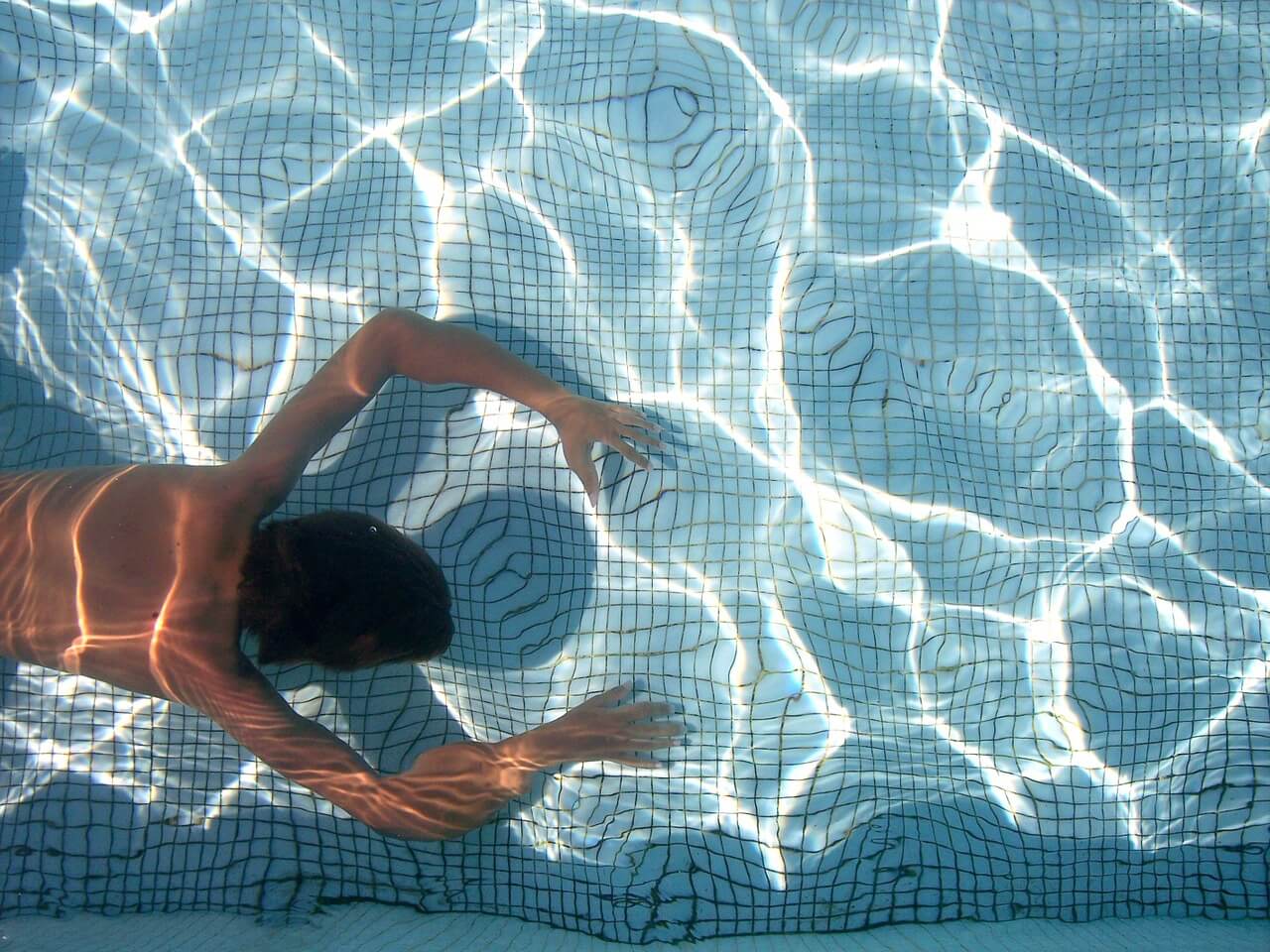
Want to be content with the water? The pool wins
When it comes to the Croatian beach offer, there are many types to choose from. Some beaches don't only offer unhindered access to the beautiful Adriatic as their lure but also much more, such as flotation devices to waterslides, sunbeds, and more. That said, certain pools also have more content than another. But, as a guest of the hotel, you can use everything that has been included in the price of your stay, while beaches (in the majority of cases at least) charge extra for these additional features. 
pixabay
Do you want to experience nature at its finest? Then the beach wins
With pools being man-made, they lack the joy of coming across unexpected discoveries which is what the sea offers. From pebbles to seaweed or sand underneath you to fish and other marine life sharing the swim with you, your experience in the Adriatic isn't just an opportunity to relax and freshen up but also to connect closely with nature. When a wave comes, those who are more in the market for excitement will surely have their blood pumping that bit harders as they are carried by the waves. You can also lie on the beach and enjoy the zen the sound of calm waves brings free of charge.

If proximity is what you're after, then the pool wins
When you're searching for a hotel, you probably want the one which is as close as possible to a beautiful Croatian beach. However, if you're a bit of out shape (with no desire to really improve that), and you learn that the promised three-minute walk to the beach lasts up to seven minutes or more at your pace and you just don't feel like walking that much as the heat is draining the life out of you, then the pools are right there inside the hotel complex. The only way to dive in for some aquatic refreshment faster is to take a shower in the hotel room, but really, where is the fun in that?
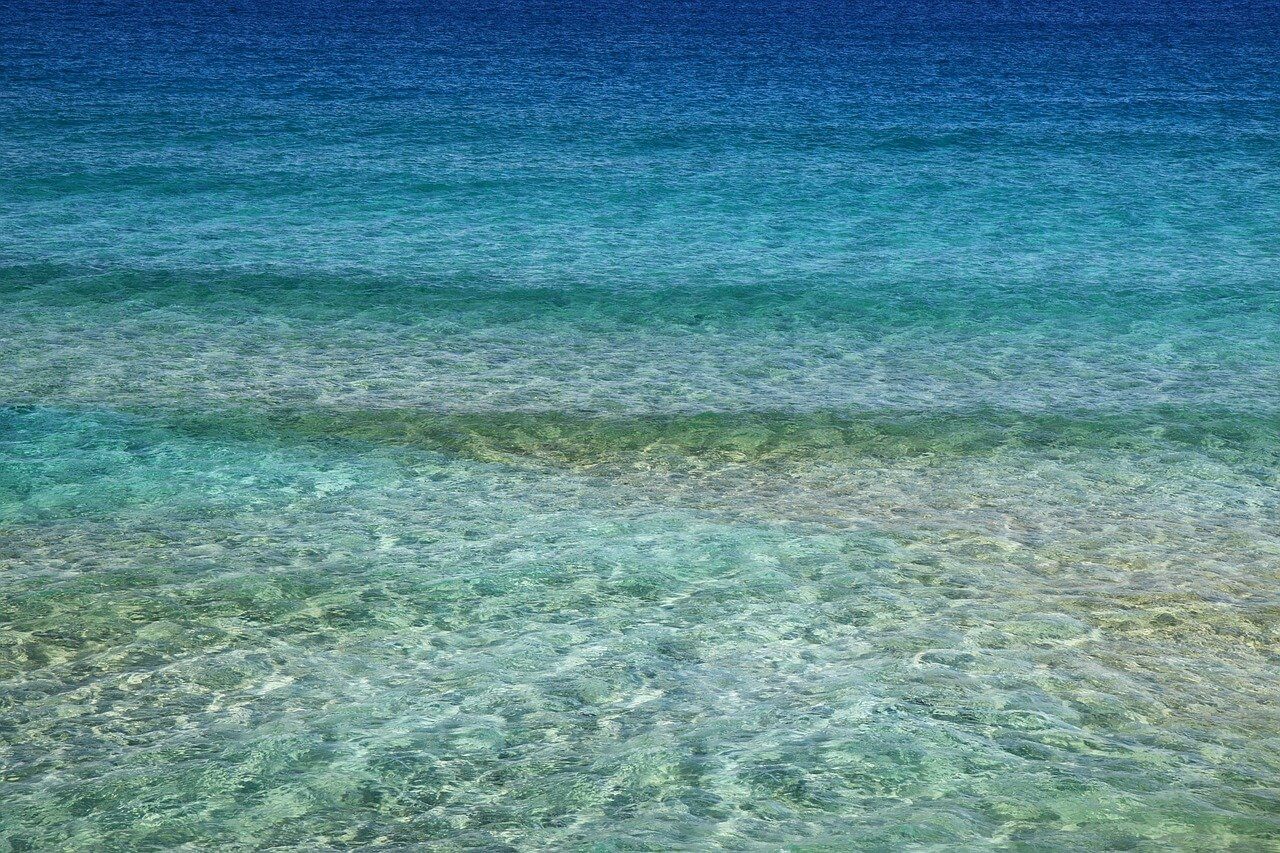
Viva la anarchia! – The beach wins
As mentioned above, pools are safer, not just because of their size and safe terrain, but also because of the rules they have. That said, if you've arrived at your destination listening to the greatest Sex Pistols hits and that little anarchist in you ready to get wild, head over to the beach to learn a whole new meaning of freedom. Swim where you want, jump from wherever you want (at your own risk, of course), and as long as you don't pollute the sea, pose a threat to other people or endanger the native marine life, where your sense of creativity ends is your only limit. Swim any time you want. You don't have to take a shower before diving in, and as many Croats will whisper to you in a clandestine manner when nobody is listening: you're free to pee in the sea if you need to.
The Croatian coast has you covered - the choice is yours
These are some of the arguments to help you decide would you prefer to be by the pool or next to a Croatian beach. Since the Croatian coast can offer both salty and freshwater options for your enjoyable holiday, it's best to try out both.
Learn more about beaches in Croatia on our TC page.
For more about the Croatian Adriatic Sea, follow TCN's dedicated page.
93% More Overnight Stays on Hvar and Tourist Crowds on Croatian Islands Increasing
June 27, 2021 - There are 93% more overnight stays on Hvar than last year and crowds are increasingly forming on some of Dalmatia's most popular islands.
Although the European Center for Disease Control (ECDC) has just made Croatia 'green' on the "COVID map" of Europe, which means that according to the strict criteria of the institution, Croatia is among the safest destinations in the context of the coronavirus epidemic, judging by current tourism figures on islands in Split-Dalmatia County, Croatia has been green for a while, reports Slobodna Dalmacija.
Hvar, Brač, and Vis have already been attracting large crowds. Data from the tourist boards of Supetar, Komiža, and Hvar shows a good start to the season, which is expected to be much higher than last year.
"The city of Hvar is currently recording a 93 percent increase in overnight stays compared to June last year, and 36 percent compared to 2019, before the pandemic. According to the forecasts for July and August, we could be around 65 percent compared to the results from 2019," Petar Razović, director of the Hvar Tourist Board, reports optimistically.
Americans, Germans, and French are the most numerous guests in Hvar, while the locals are growing by about ten percent. With school holidays and intensified actions on offer, there will surely be more.
"With the delta variant, the loss of the British tourists is noticeable, we are at about ten percent compared to 2019, but a change in the regime could lead to a slight increase. Our primary goal is to protect the destination because God forbid the delta variant penetrates Hvar. That is why the new conditions for the arrival of British tourists will certainly be announced, both in the whole of Croatia and on our island," Razović announces.
People of Hvar, he says, tried to be as ready as possible for the season, so a large number of private renters responded to the vaccination campaign of the Ministry of Tourism (vaccination on the island is about 54 percent), and they are ready for boaters whose number already suggests that the season could be successful.
"We are even recording an increase compared to 2019! Hvar is this year's top destination for boaters. They come to us from all over Southeast Europe and the surrounding countries, possibly many Italians. Numerous boaters and shipowners have already announced an increased number of arrivals in the port of Hvar at the beginning of July, which indicates that we will continue with significant growth," said Petar Razović.
If Croatia remains "green," Hvar should still see the influx of car guests from Central Europe.
Apartments in Komiža on the island of Vis are also being filled earlier than usual. Bogoljub Mitraković, the director of the local tourist board, says that such a thing could not be said from a cursory glance at eVisitor, in which only five hundred and a few guests were registered yesterday.
"A decent number of people still do not report guests; the inspectorate is as it is. There are house owners, their friends, people who do not live in Komiža but have some connection with the place; there are apartment owners who do not register guests ... Everything. Unfortunately, that's the way it is," says Mitraković, noting that both Vis and Komiža are currently at 73 percent of overnight stays from June 2019.
And they had a relatively well last season with 60-70 percent of arrivals compared to the year before. However, it could have been even better.
"We still have two ferry lines this month. Last weekend there was a collapse ... On Monday morning, I came to buy a ticket for the ferry at 11 am, and there was only one at 6:30 pm. I don't know why Jadrolinija couldn't start driving three times a day a little earlier. It will be a simpler solution to keep people on hold at the ferry port. The Jadrolinija people are kind, but the lines to Vis already needed to be strengthened. They don't do us any favors like this," Mitraković thinks.
Last year, domestic tourists saved the season for Komiža, and now foreigners are slowly returning.
"Poles, Czechs ..., there are a solid number of sailors. The Blue Cave works well. Prices?! Um, a scoop of ice cream in Komiža is 12 kuna. Restaurants? People had to equip themselves, hire staff, and not everything is great every day. We have about thirty percent of renters who do not live on the island. And the same is now with the owners of an increasing number of restaurants," the director of the Komiža tourist board said.
Last weekend brought a bit more tourist activity than usual in Supetar on Brač, where they also expect a significant increase in the number of guests at the beginning of July. So far, they were mostly domestic, along with those from Hungary, Poland, Germany, and Slovenia.
"Currently, there is a minimal number of arrivals of guests from the United Kingdom, and Norway and Sweden, tourists who were among the most numerous in the pre-pandemic period," says Ivan Cvitanić.
"The announcements we have from hotels, but also the private accommodation sector, are good, and reservations have started in a much larger volume in the last few weeks. So, from today's perspective, it seems that this tourist season will be better than last year's, which, despite the pandemic, was very good in the end," Cvitanić says hopefully.
For more about travel in Croatia, follow TCN's dedicated page.
Jadrolinija National Ferry Company Acquires New Ship
17 June 2021 - Jadrolinija national ferry company acquired a new ship that will connect the town of Biograd with Tkon on Pasman island.
"Jadrolinija" is one of the most used words in the Croatian language during the summer, at least on the coast. This national ferry company has been connecting the mainland and the islands of the Croatian part of the Adriatic for decades. Its international lines see it connecting Croatia with Italy for part of the year as well.
Because of the small size of the towns and villages and the scarce population living on the islands, only a portion of these lines are profitable and the fleet is pretty large. It is therefore quite a newsworthy item to see Jadrolinija presenting a new addition. Ferry „Tkon“ joined the fleet that now counts 55 ships in total.
Valuable Addition
It was purchased from Rapska Plovidba (Rab Shipping) as index.hr reports. Tkon is a product of renowned Croatian shipyard Viktor Lenac. It is 42 metres long, 15,3 metres wide, and can hold 250 passengers and 35 cars. It was built in 2003. In comparison, ferry „Prizna“ that serviced this Jadrolinija line so far is over 50 years old. It will be on stand-by for the busiest parts of the year. After the purchase Tkon is heading to the docks for maintenace and re-painting. This is good news for all travellers to Pasman island, but also all the islanders and Biograd locals. Chairman of the board of Jadolinija, David Spota said the move goes along the strategic goal of updating and improving the fleet. This is the fifth new ship to come under Jadrolinija flag in the last four years.
It really is difficult to avoid blue-striped Jadrolinija ships along the Croatian coast. They bring much joy to all those wishing to visit some of over a thousand magical islands of Croatia. Here's to Tkon's smooth sailing!
Follow the latest travel updates and COVID-19 news from Croatia HERE.
For more on travel in Croatia, follow TCN's dedicated page.


